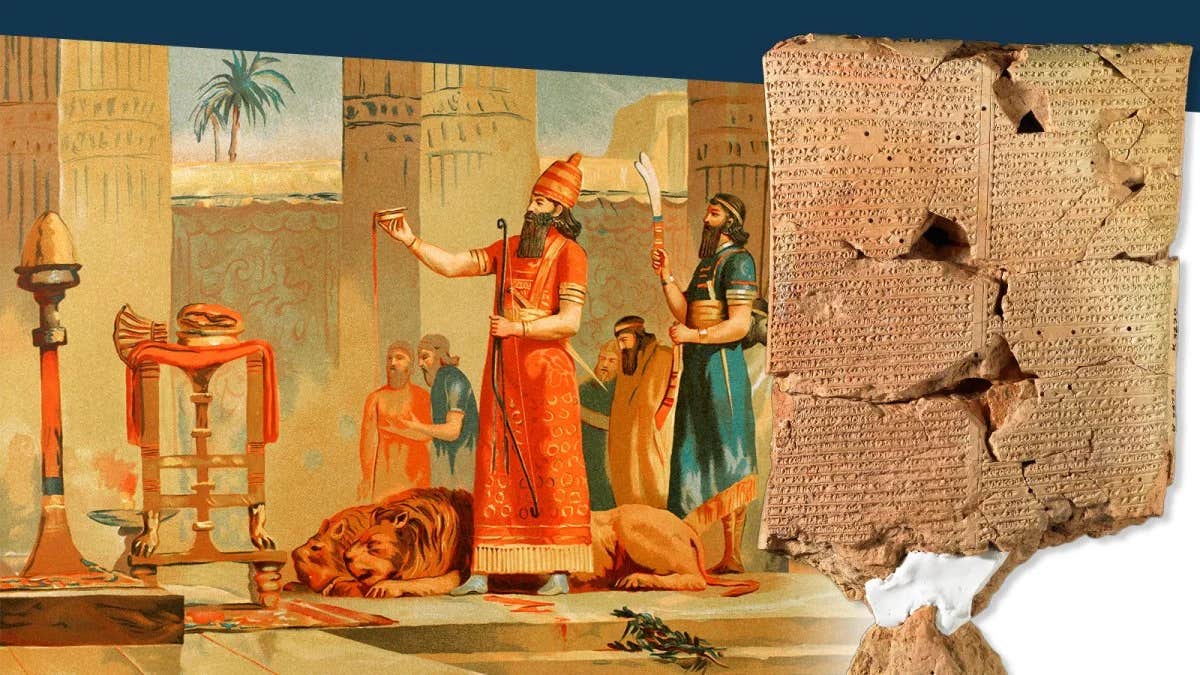Ancient tablet reveals the secrets of a 3,000 year-old biblical view of life
A 3,000-year-old brick offers insights into Neo-Assyrian biodiversity, daily life, and ancient construction practices through DNA analysis.

3,000-year-old Neo-Assyrian brick, inscribed with ancient text, has revealed biodiversity and construction secrets. (CREDIT: CC BY-SA 4.0)
Archaeologists have unlocked a portal to the past through an object that might seem mundane at first glance: a sun-dried brick. Found amidst the ruins of a Neo-Assyrian palace in modern-day Iraq, this unassuming artifact has unveiled extraordinary insights into life nearly 3,000 years ago.
This brick was not merely a building block but a historical document in itself. Inscribed with cuneiform symbols, it bore the words: “The property of the palace of Ashurnasirpal, king of Assyria.” This inscription linked the artifact to the reign of Ashurnasirpal II, whose rule marked the emergence of the Neo-Assyrian Empire.
Crafted around 879 BCE, the brick was part of the North-West Palace in Kalhu, now Nimrud, a city that served as the empire’s capital. Historical records and astronomical data helped pinpoint its origins, revealing its role in a grand architectural project that symbolized Assyrian power.
The construction material was equally telling. Made from Tigris River mud mixed with straw, chaff, or animal dung, the brick exemplified ancient building practices. Unlike modern kiln-fired bricks, these sun-dried versions preserved biological traces embedded during their creation, effectively transforming them into time capsules.
A Breakthrough in Ancient DNA
The true marvel of this artifact emerged through aDNA (ancient DNA) analysis, a groundbreaking technique initially developed in 1984. This process, once reserved for preserved tissues of extinct species, was applied to an unconventional medium: clay bricks.
Extracting genetic material from ancient bricks is challenging due to the fragmentation and low concentration of DNA. However, researchers successfully analyzed this brick, correlating its biological contents with textual records from the Neo-Assyrian period.
This approach provided an unprecedented glimpse into the plants and animals that thrived in ninth-century BCE Mesopotamia.
Related Stories
Embedded within the brick were traces of 34 plant species, including birch, cabbage, mustard, laurel, and monocotyledonous grasses. The grasses hinted at cultivated crops like wheat, underscoring the agricultural practices of the era.
Animal DNA, primarily derived from dung, was also preserved. This provided clues about domesticated animals and their interactions with humans in ancient Assyrian society. The use of organic materials in brick production, coupled with natural drying methods, was pivotal in safeguarding this genetic information for millennia.
This discovery was the result of a collaborative effort involving institutions like the University of Oxford, the University of Copenhagen, and the National Museum of Denmark. Sophie Lund Rasmussen, a lead researcher, emphasized the importance of interdisciplinary research in uncovering such treasures.
“It’s remarkable how a simple brick can act as a time capsule, preserving ecological artifacts from thousands of years ago,” Rasmussen noted.
Troels Arbøll, an Assyriologist, highlighted the cultural significance of the findings. “The DNA analysis provides an unparalleled glimpse into the biodiversity of an ancient Assyrian community,” he said, underscoring how the artifact connects biology with history.
From Archaeological Curiosity to Scientific Marvel
The site of Kalhu has long been central to the study of Mesopotamian civilization. Excavated initially in 1845 by Sir Austen Henry Layard, it was only the second Mesopotamian city to be unearthed. Subsequent efforts, including those led by Max Mallowan and Agatha Christie, expanded the understanding of this ancient city.
However, recent conflicts in the region have partially destroyed the North-West Palace, making the preservation of such artifacts even more critical. The brick’s recovery and the data it yielded offer a poignant reminder of what can be lost without concerted efforts to protect cultural heritage.
The implications of this discovery stretch far beyond archaeology. By combining ancient inscriptions with biological evidence, researchers reconstructed a snapshot of daily life in the Neo-Assyrian Empire. This intersection of history and science offers a richer, more nuanced understanding of the past.
In a time when technology continuously reshapes human knowledge, this ancient brick serves as a testament to the enduring value of interdisciplinary research. It reminds us that even seemingly ordinary objects can unlock profound secrets, connecting us to the lives of people who walked the earth thousands of years ago.
Note: Materials provided above by The Brighter Side of News. Content may be edited for style and length.
Like these kind of feel good stories? Get The Brighter Side of News' newsletter.
Joseph Shavit
Head Science News Writer | Communicating Innovation & Discovery
Based in Los Angeles, Joseph Shavit is an accomplished science journalist, head science news writer and co-founder at The Brighter Side of News, where he translates cutting-edge discoveries into compelling stories for a broad audience. With a strong background spanning science, business, product management, media leadership, and entrepreneurship, Joseph brings a unique perspective to science communication. His expertise allows him to uncover the intersection of technological advancements and market potential, shedding light on how groundbreaking research evolves into transformative products and industries.



